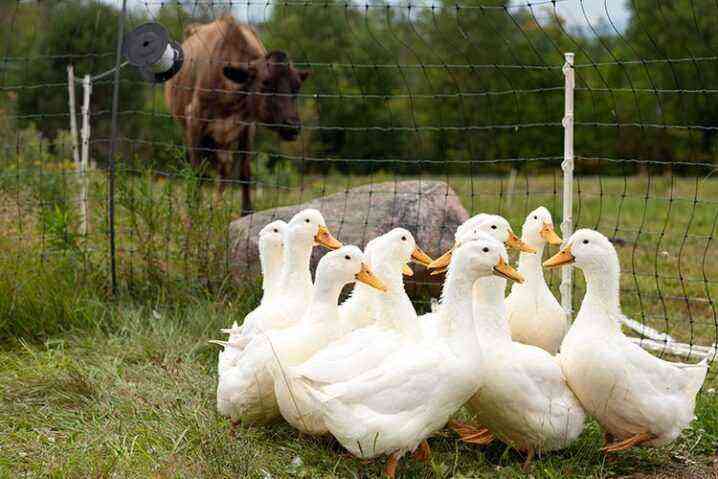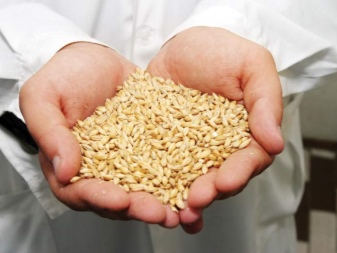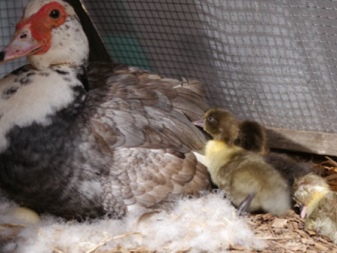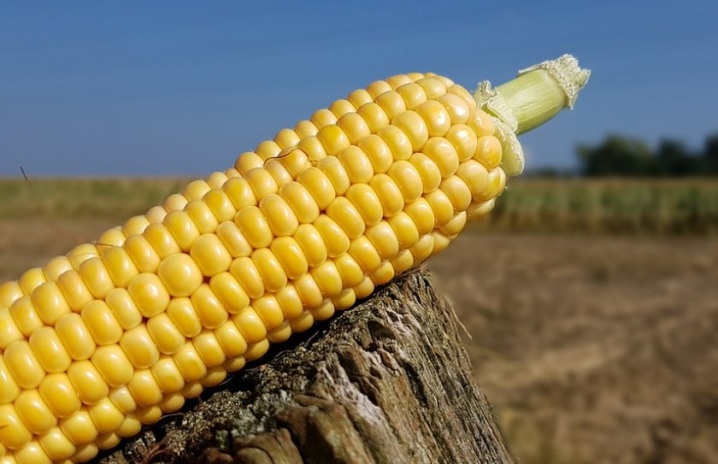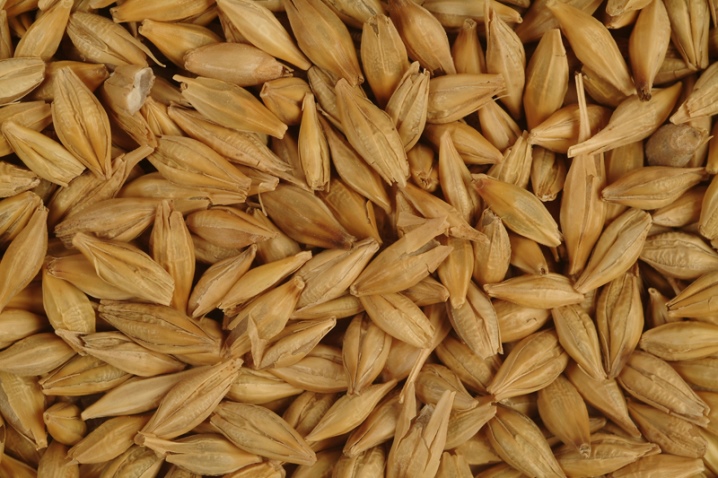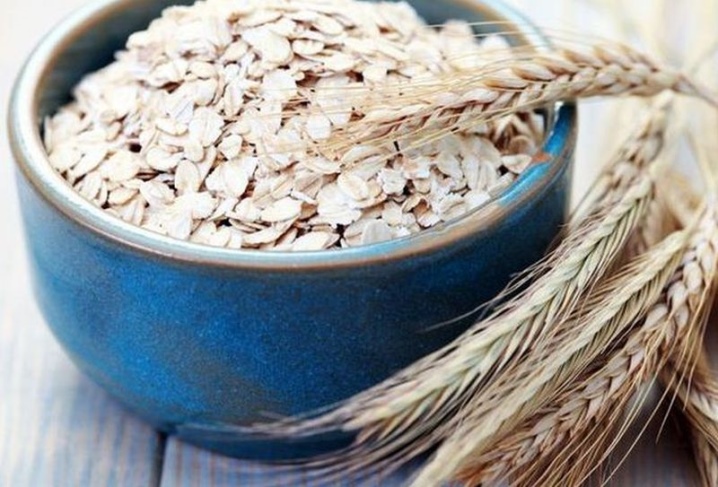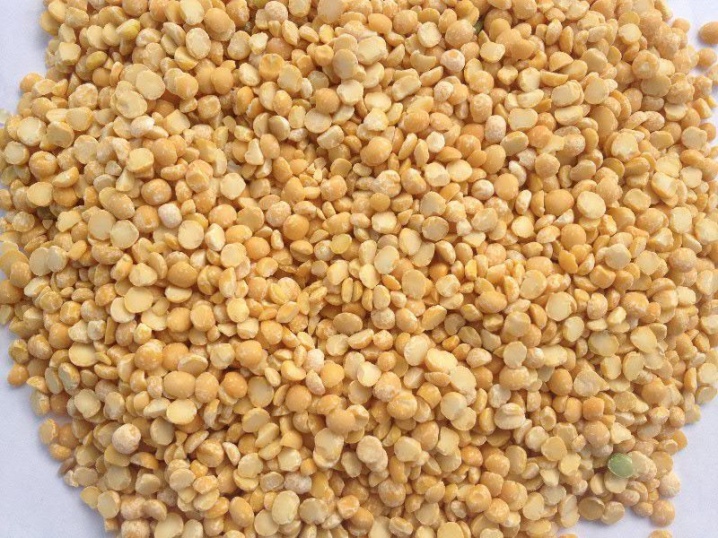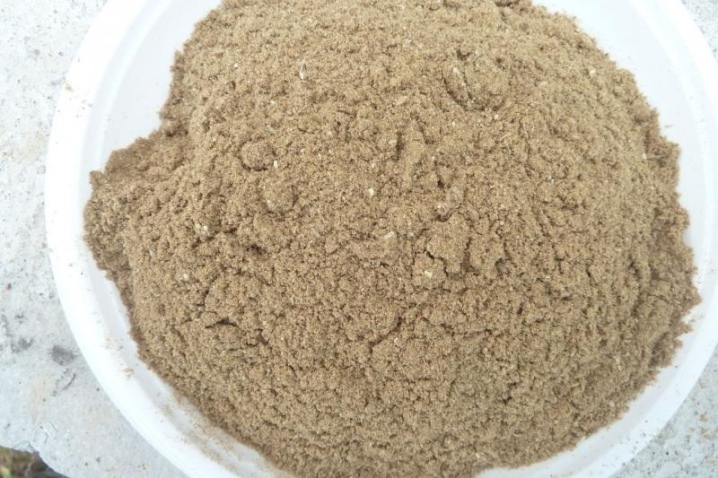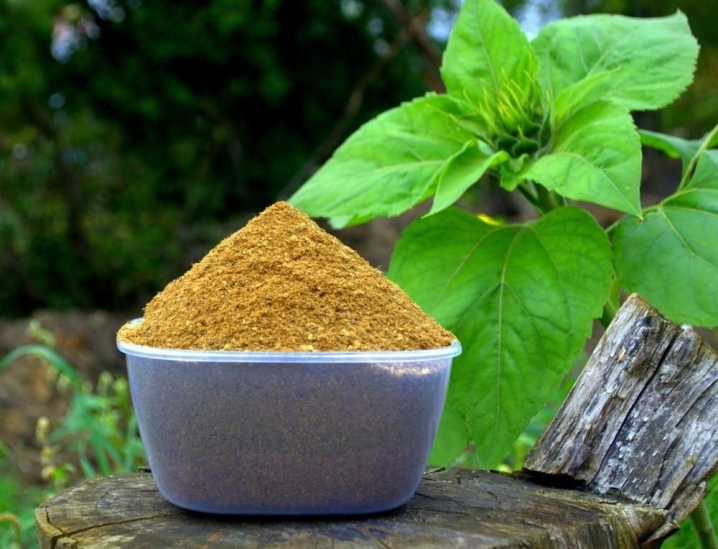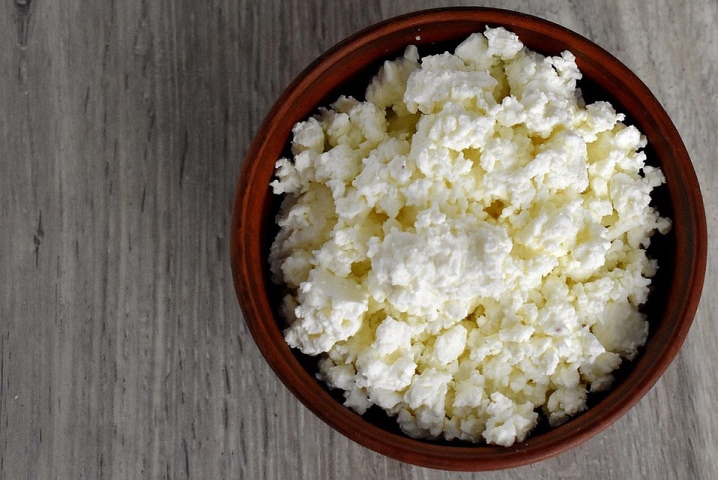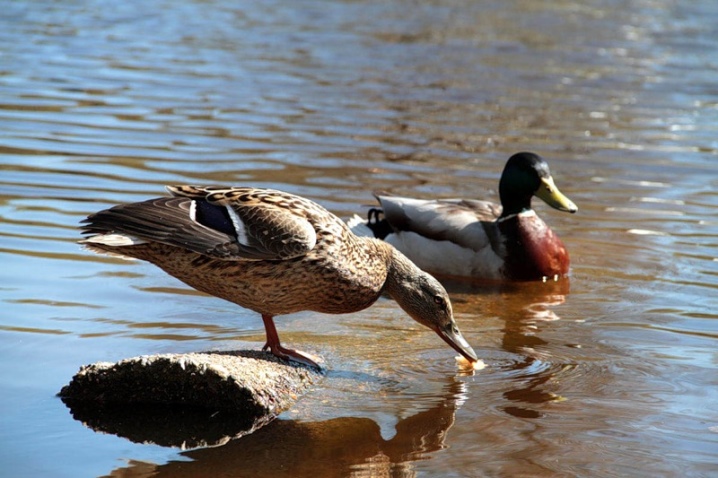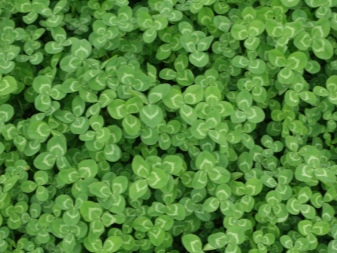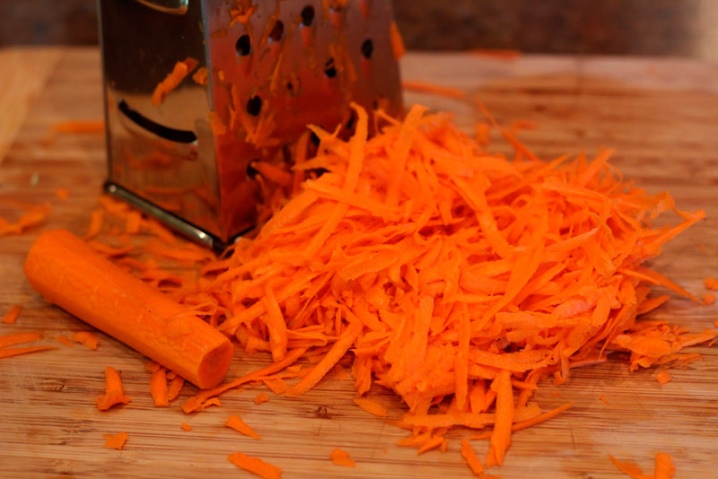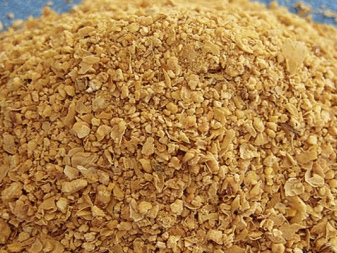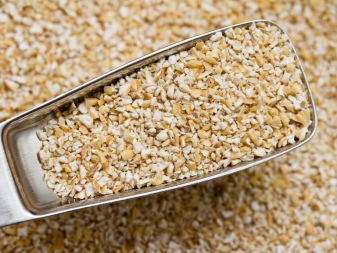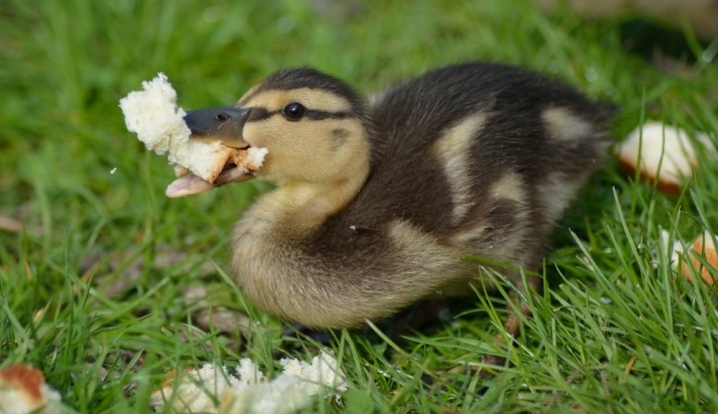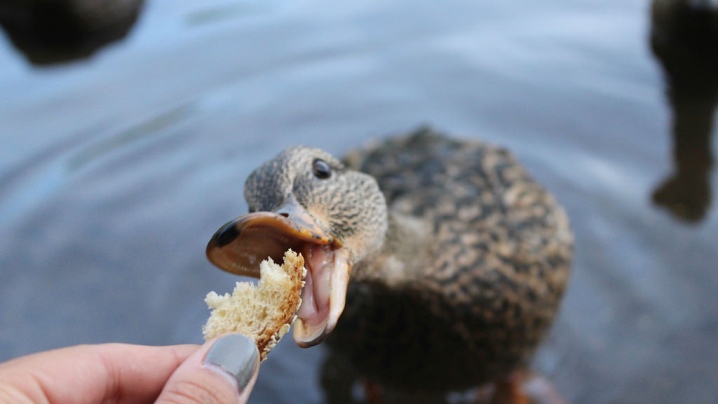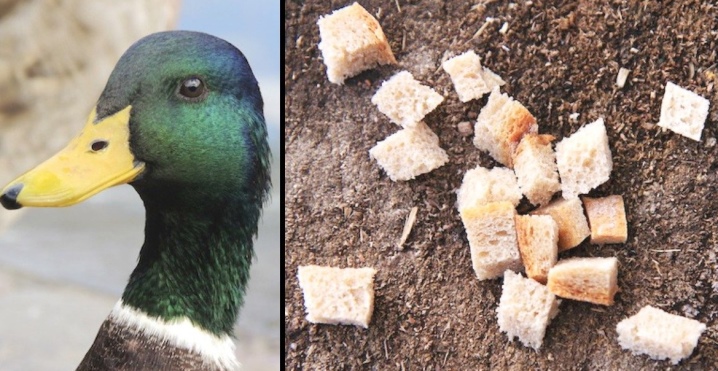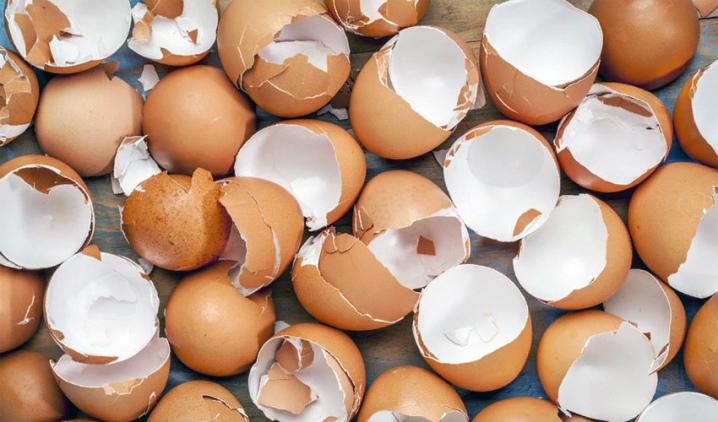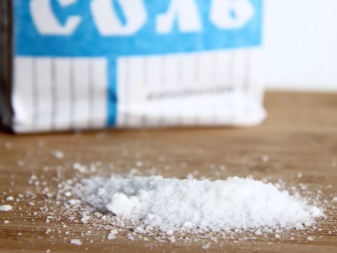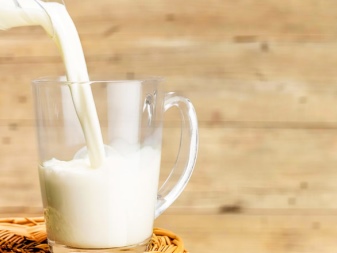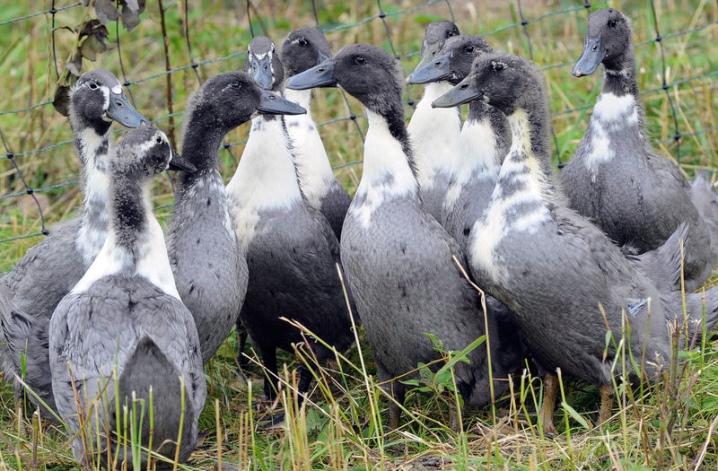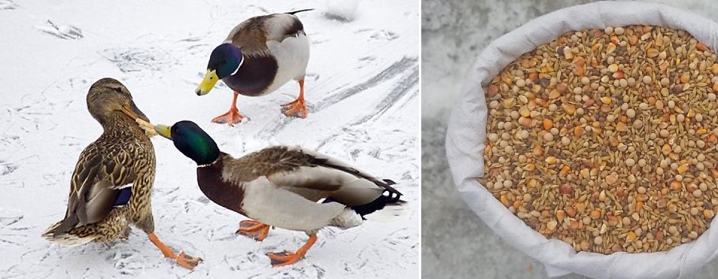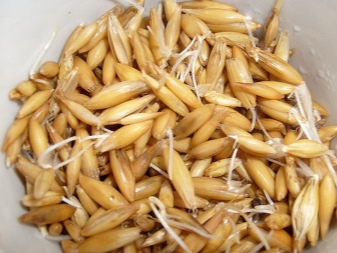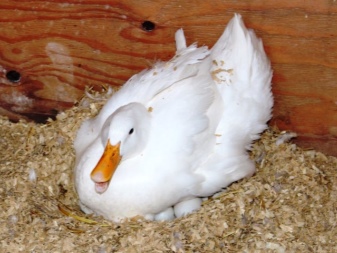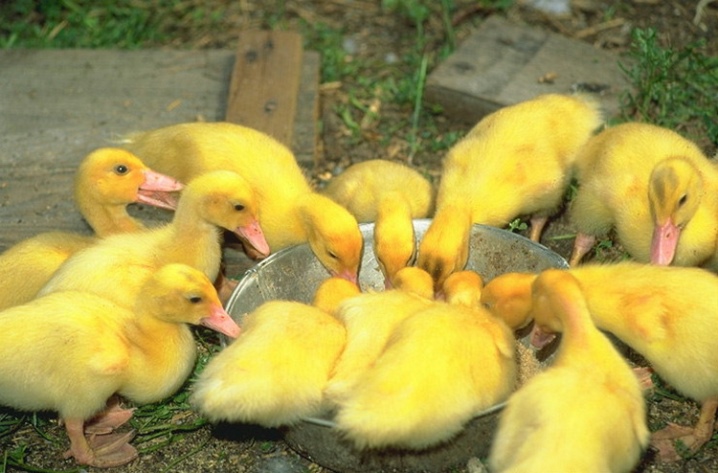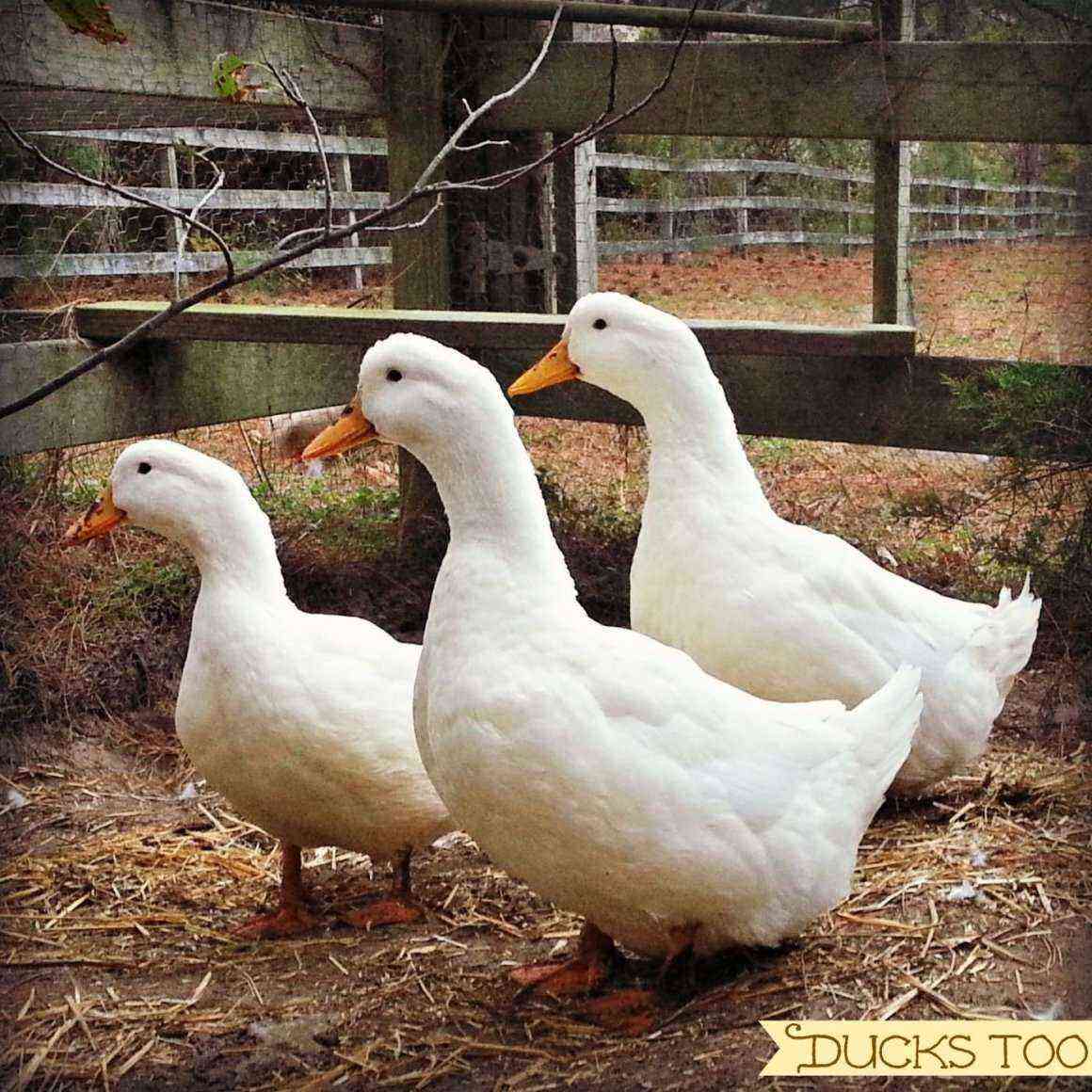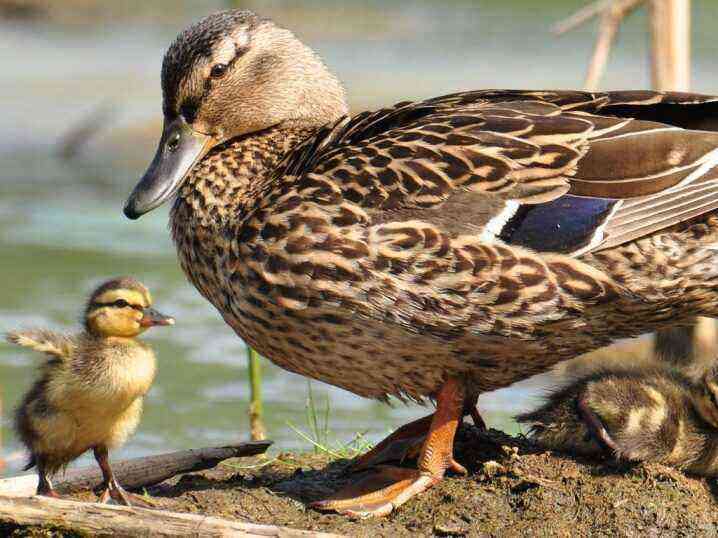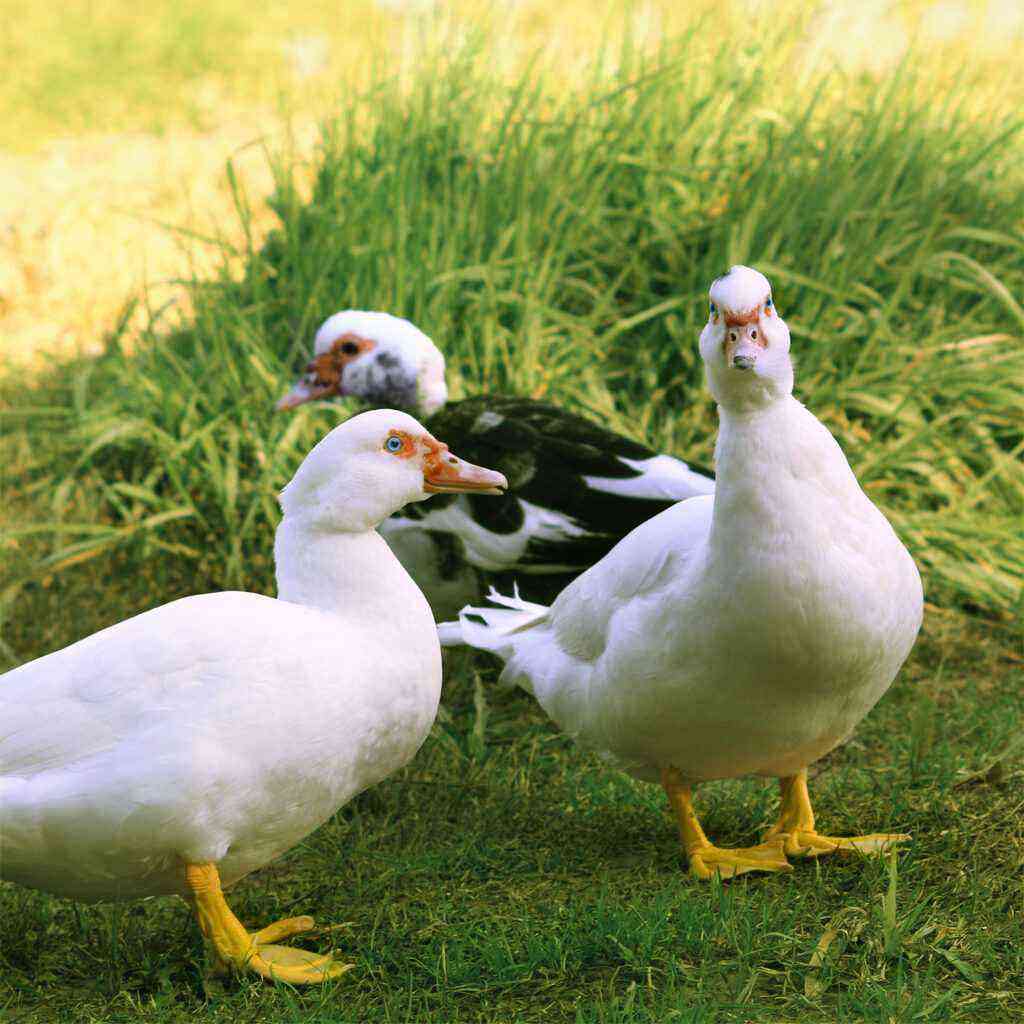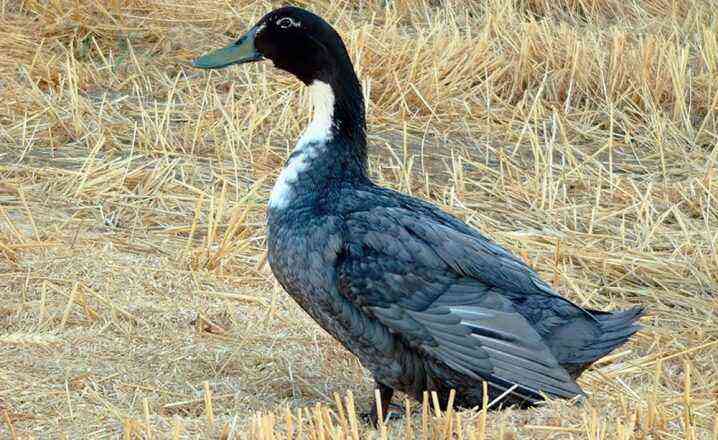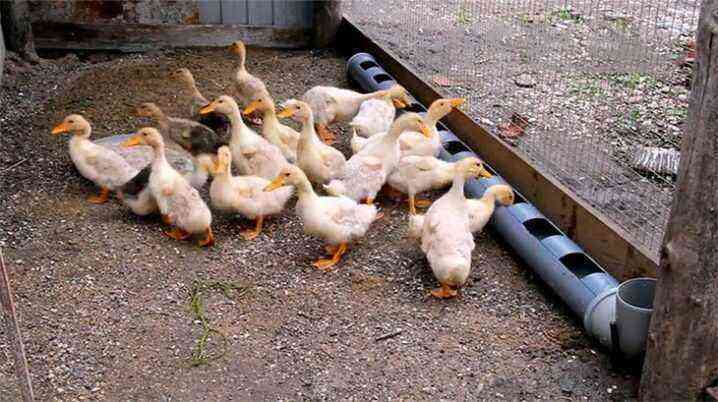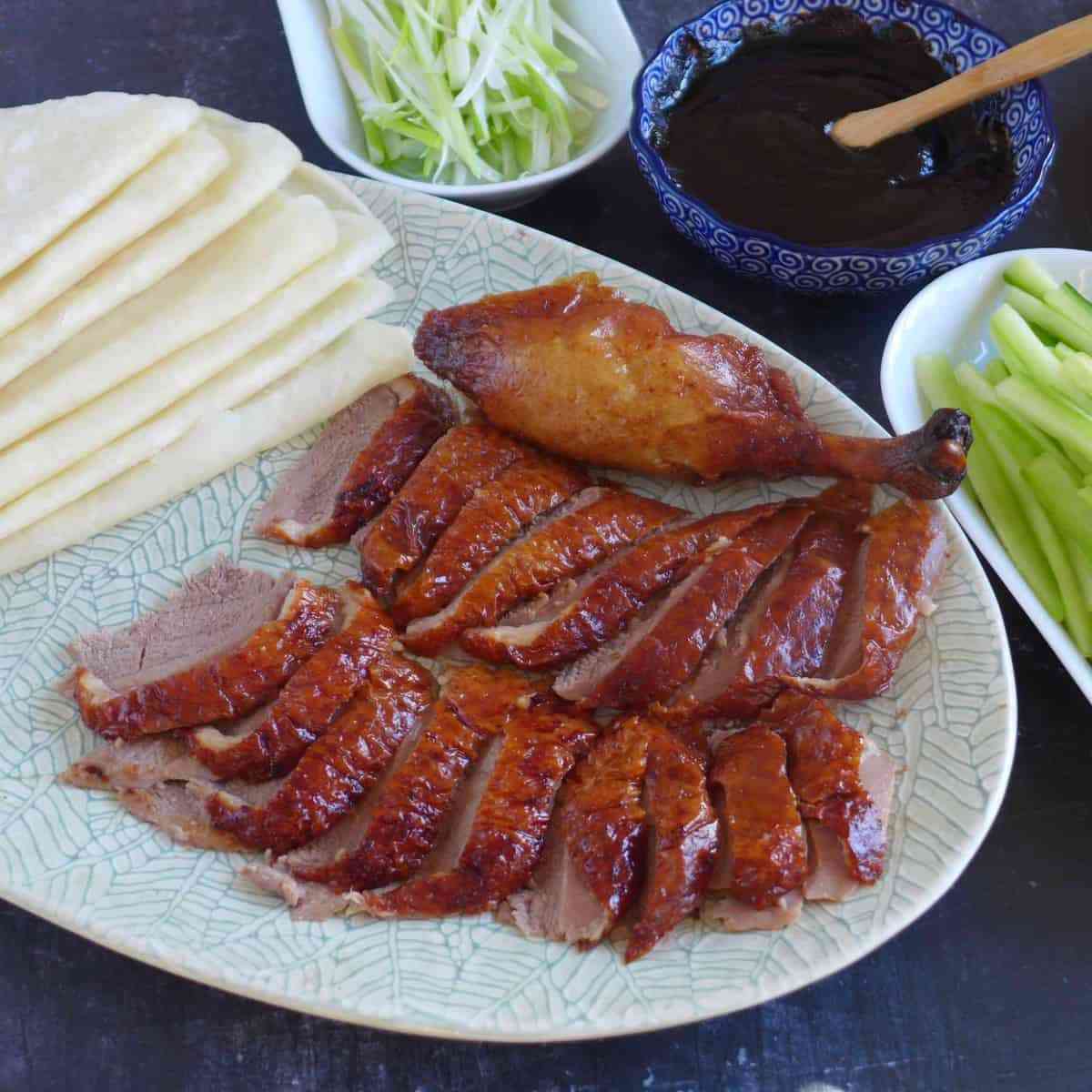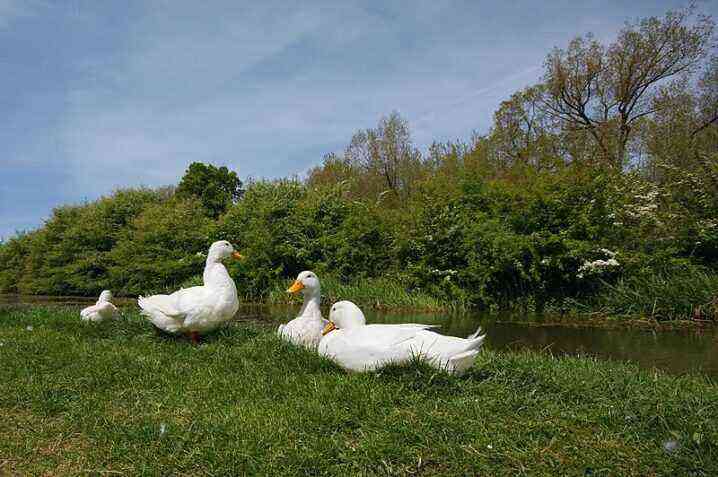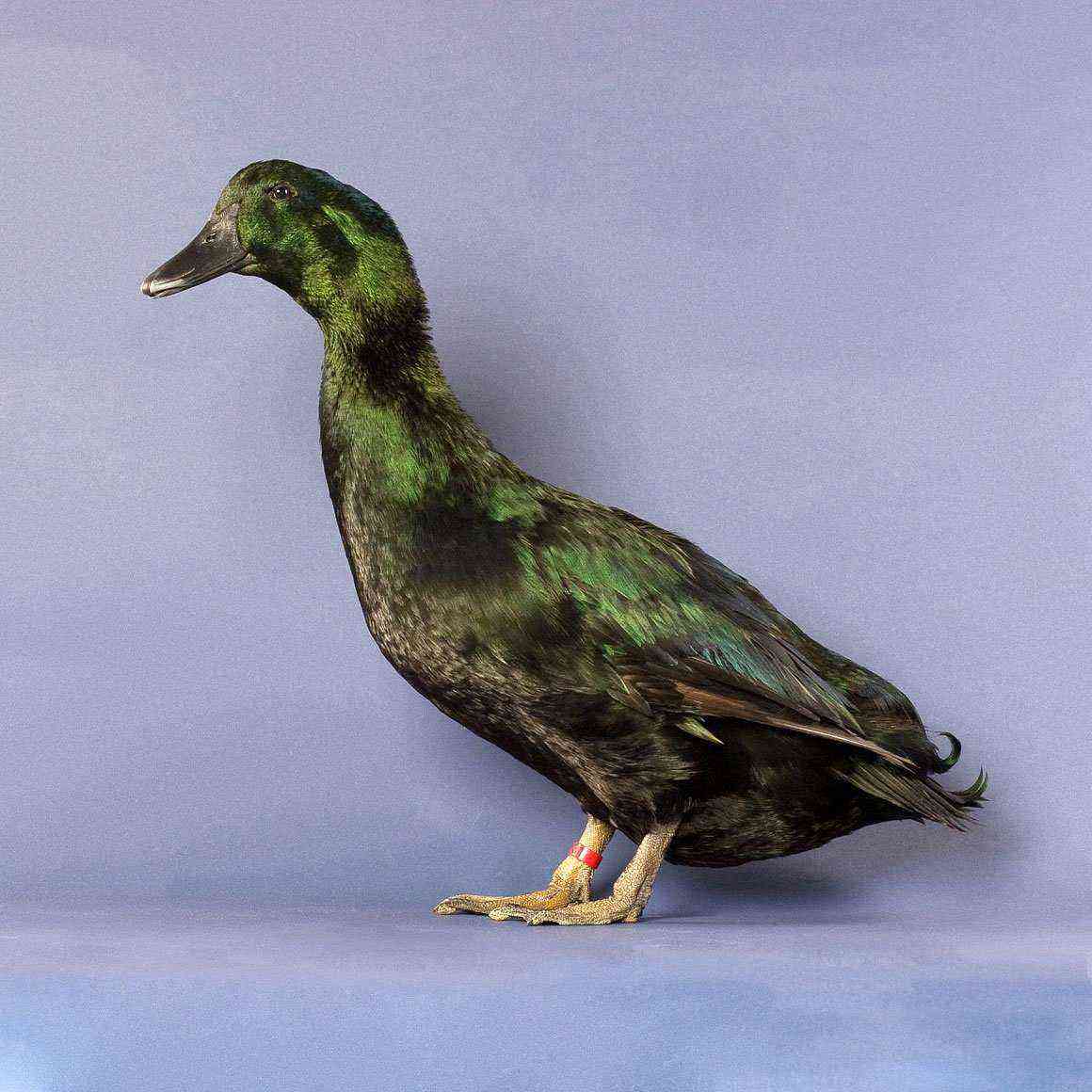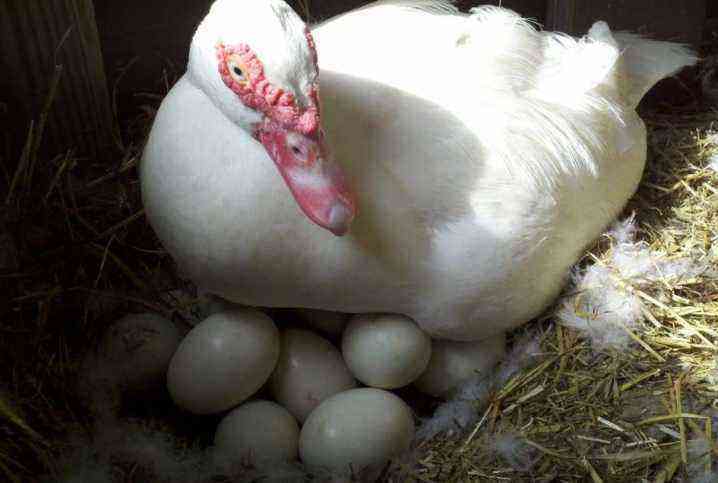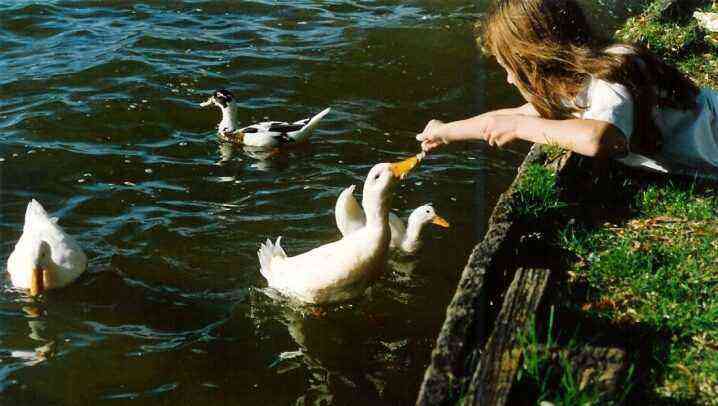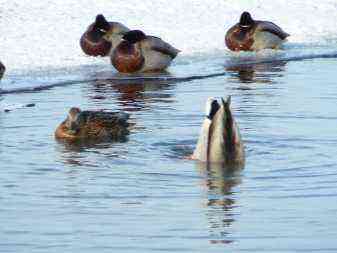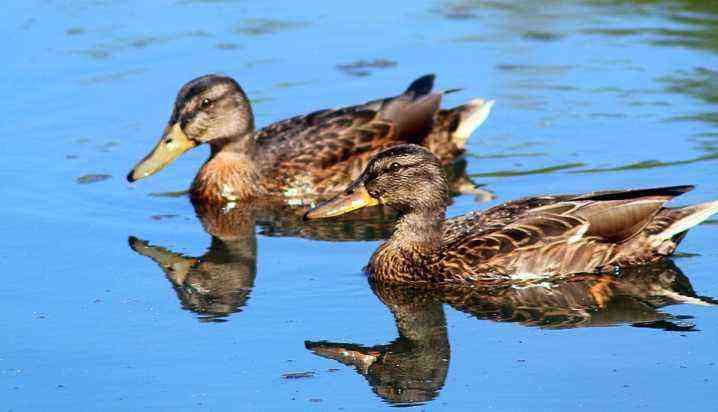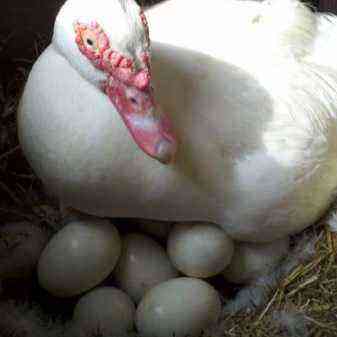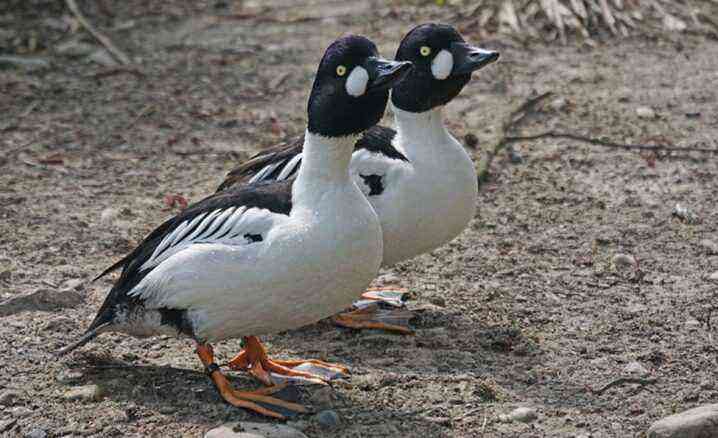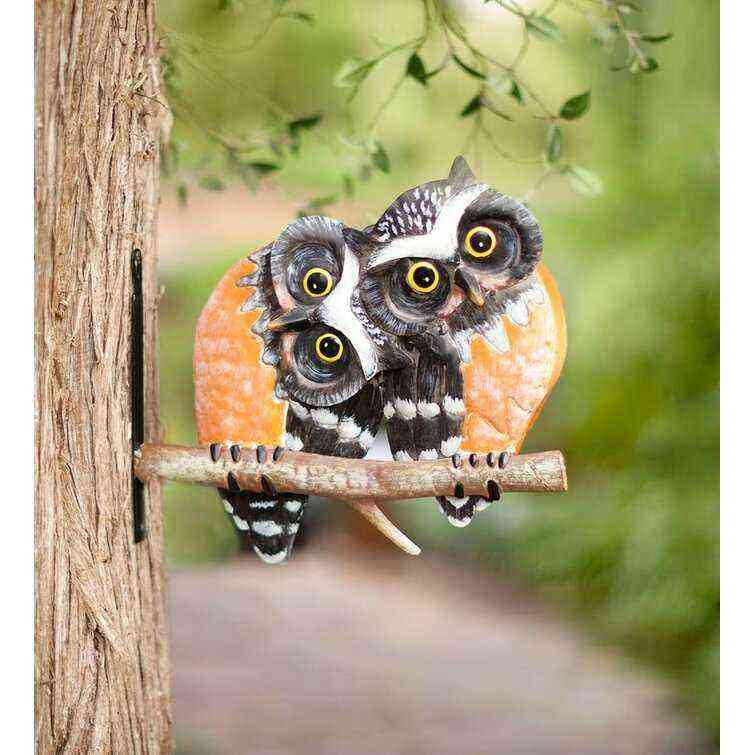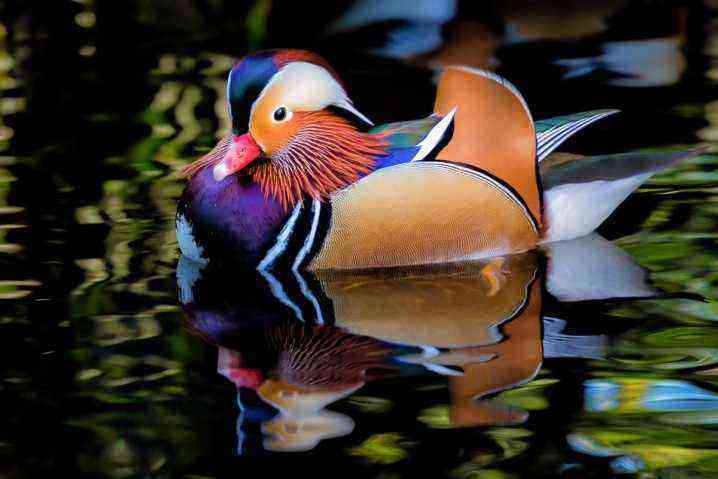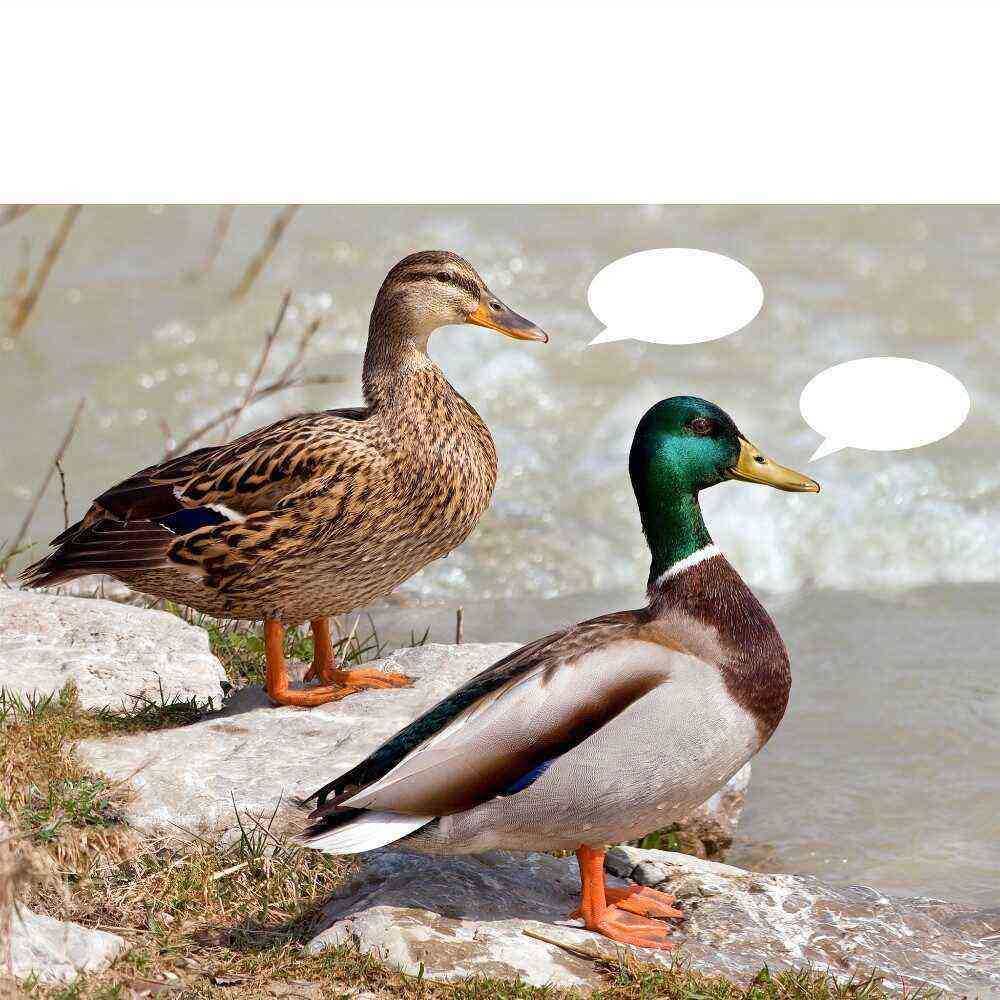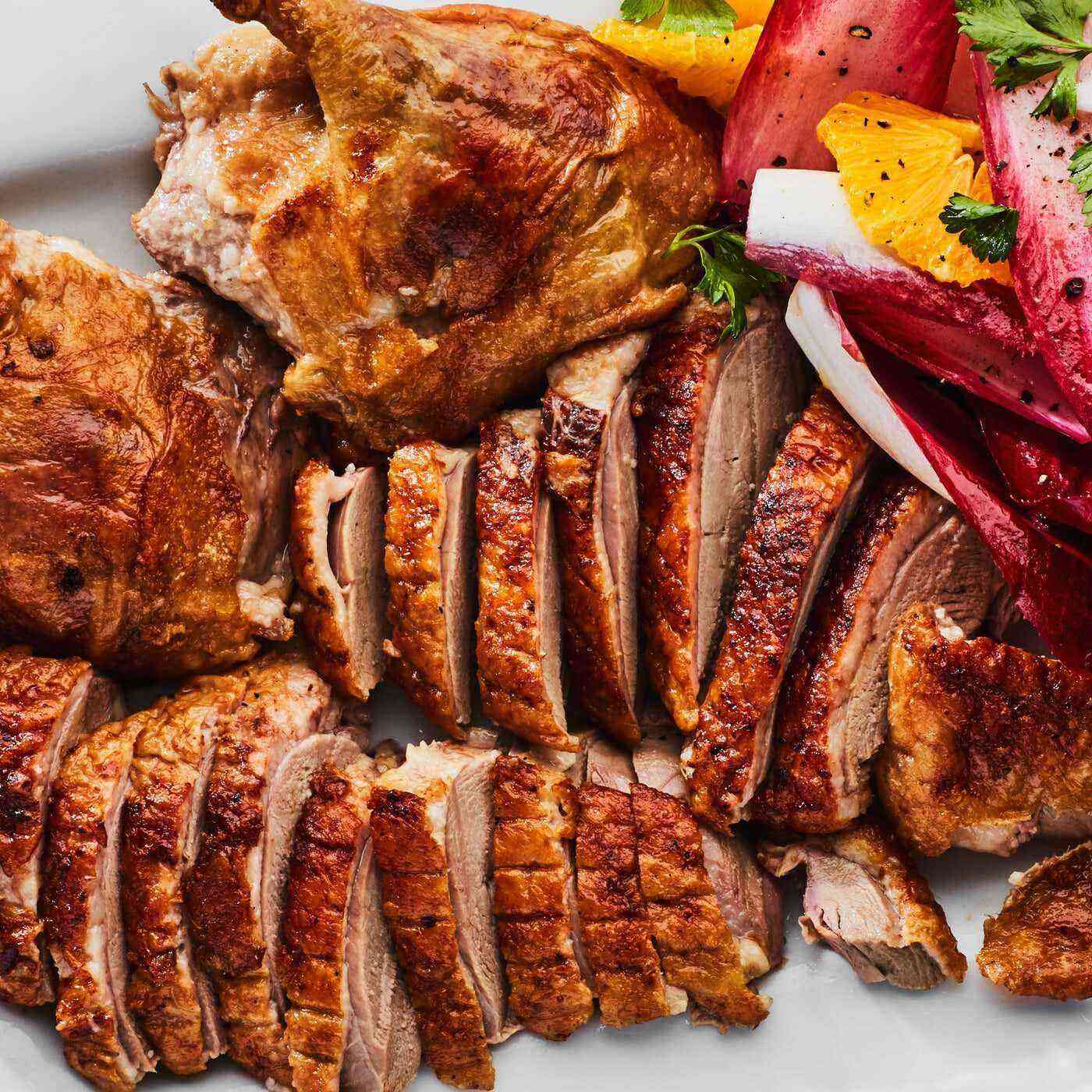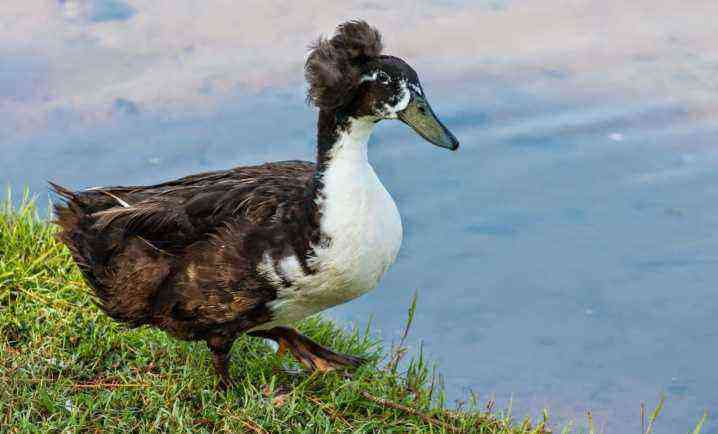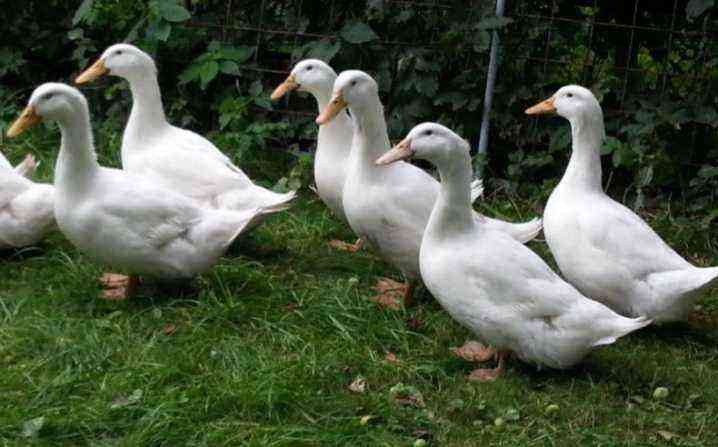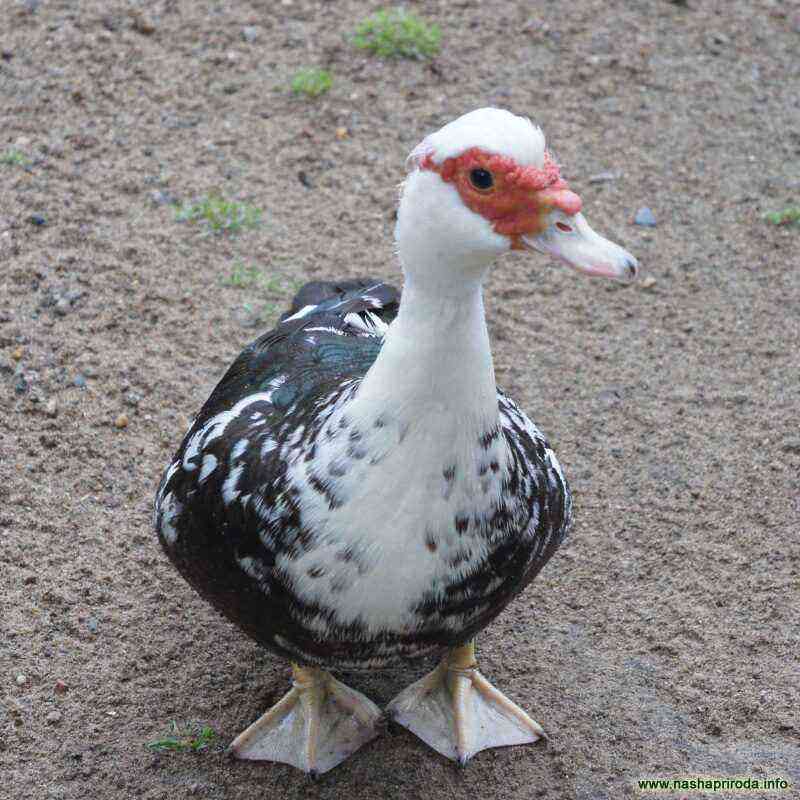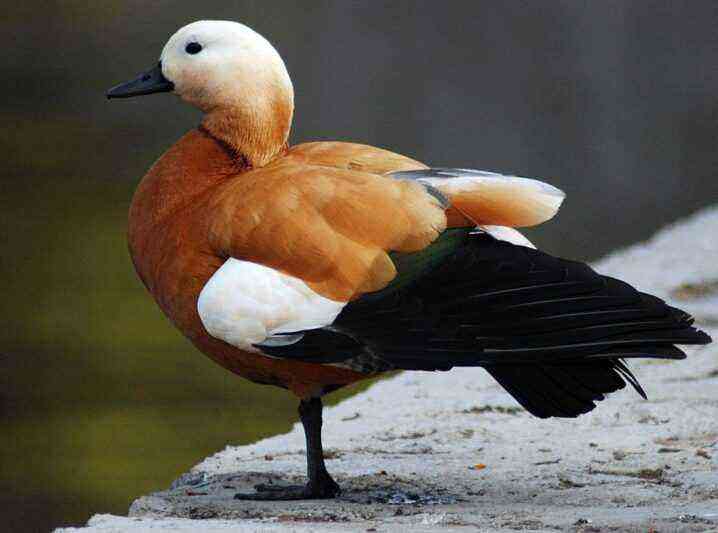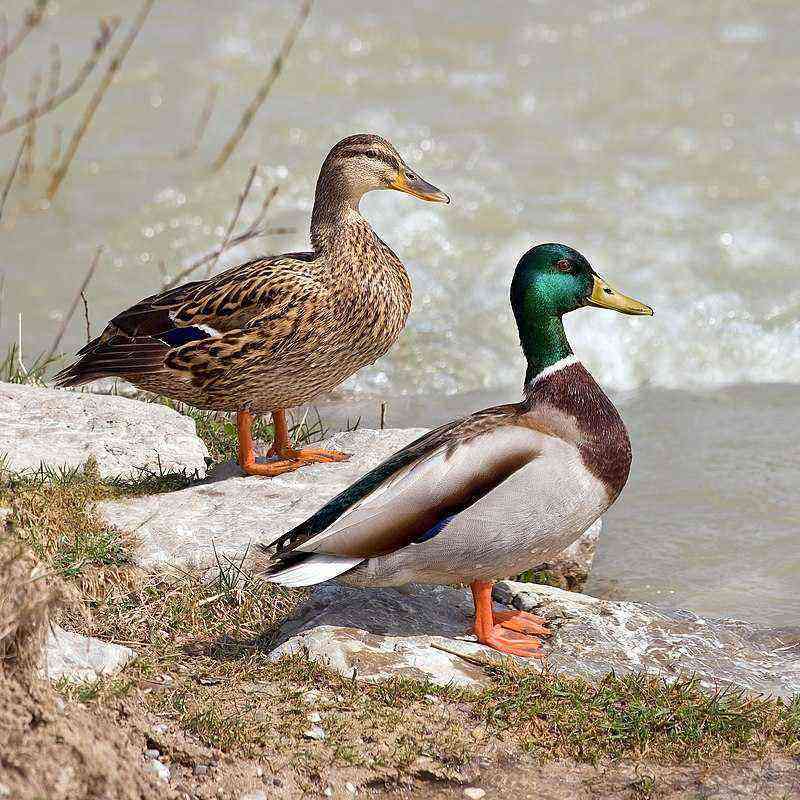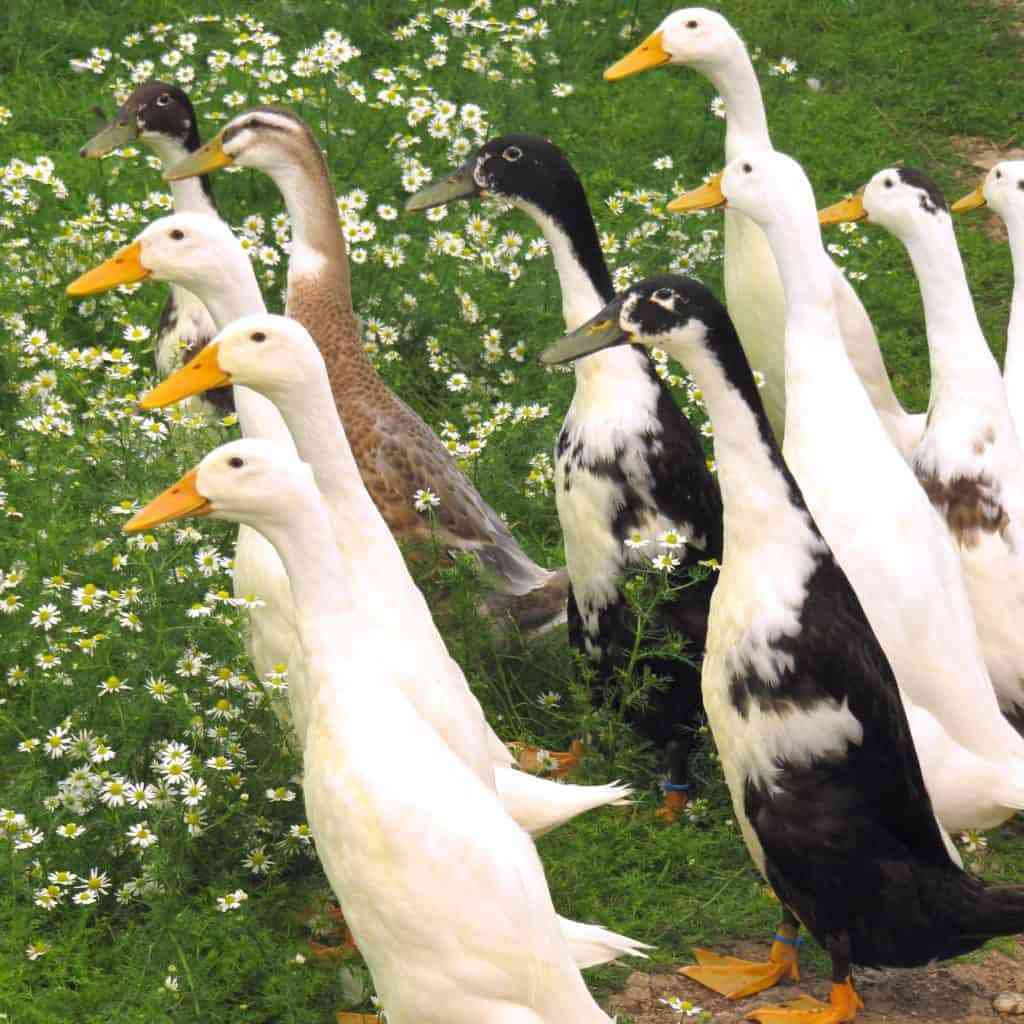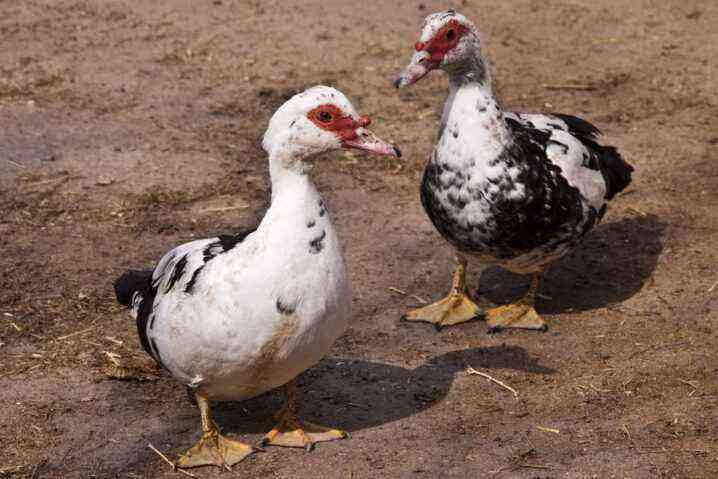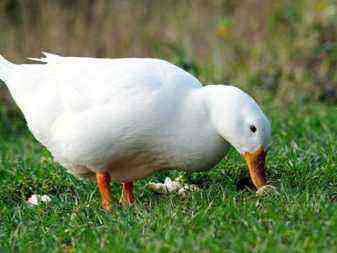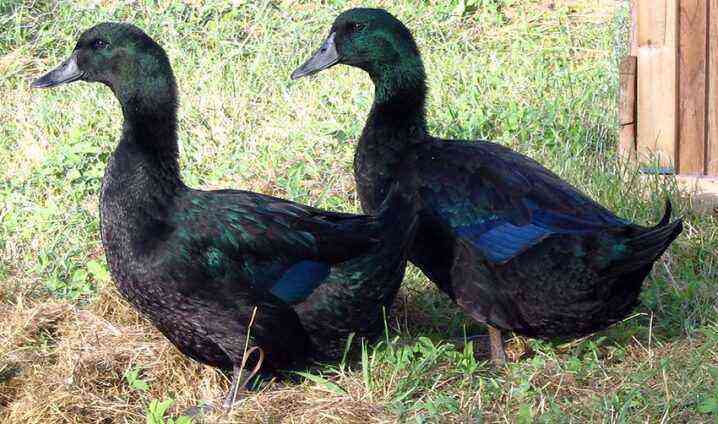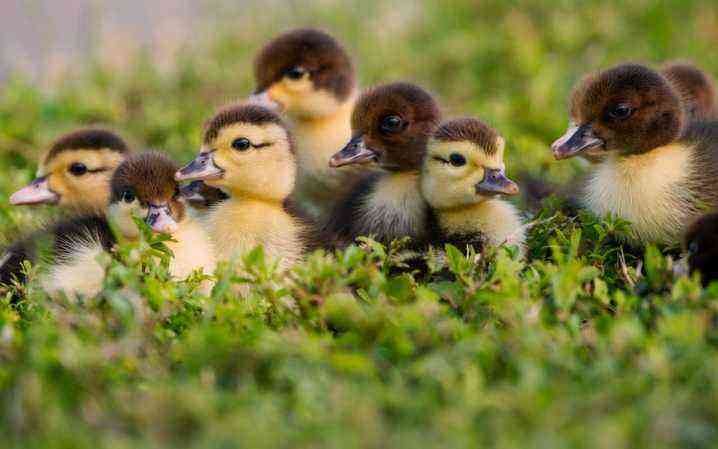In a wide variety of poultry, ducks are considered the most unpretentious creatures, distinguished by their independence. Daily free range allows them to find food without human help. Only this food is not enough for full productivity. And in order for the birds to receive a full complex of vitamins and show good growth results, it is necessary to make the right diet for them.
Feed overview
To date, there are several main varieties of feed for ducks, as part of which there is a full complex of vitamins and substances necessary for proper development:
- grain feed;
- feed of animal origin;
- succulent feed;
- processing of agricultural raw materials.
The presented varieties of feed must be present in the diet of ducks. Thanks to this, the work of the digestive system is normalized in the bird, the bone skeleton is formed, and the eggshell is also strengthened.
Proper duck nutrition is the main and most important factor in stable egg production with the subsequent birth of healthy chicks. Especially in cases where the farmer decided to breed representatives of this type of poultry.
The basis of the correct diet of domestic ducks is grain feed. Assimilation by the bird’s body of its components occurs by 80%, so it is presented on the “bird table” in winter. The main representatives of this type of feed are the most common crops.
- Corn. The presented product must make up 50% of the total feed volume. To feed the chicks, it is necessary to reduce this figure by 10%. Corn has a high energy value due to its qualities. It contains a large amount of carotene and little fiber. The only disadvantage of corn culture is the insufficient amount of amino acids in the composition.
- Wheat. The volume of wheat grain should not exceed a third of the daily feed intake. Best of all, in the diet of ducks, millet takes root and is assimilated in the form crushed to a flour state, but only coarsely ground. It must be diluted with other wet foods, only pre-clarify the correct cooking recipe.
Fine flour should not be given to ducks. When ingested, it begins to stick together, and in the process of its use it can clog the nose.
- Barley. In ready mixes, the amount of cereal present can be up to a maximum of 30%. The hard shell of the culture is very difficult to digest by the duck stomach, so it is presented to the bird’s table only in a soaked form.
- Oat. The presented cereal culture contains a large amount of fat. That is why it is used to quickly increase the weight of the bird. Most often, oatmeal is added to the food of ducks, which are grown for subsequent slaughter.
- Beans. The most common representative of this crop is peas. It contains a large amount of protein, but, unfortunately, ducks are not too fond of such a delicacy. That is why it is presented on the bird’s table in the form of crushed cereals.
The main sources of protein and calcium are animal products. In the wild, ducks eat insects, shellfish, river fish, frogs, and snails. They are able to positively influence the growth of birds and their egg production. For ducks living at home, slightly different products are used.
- Fish flour. For proper nutrition, ducks need to be given defatted flour. It contains a large amount of protein, as well as vitamins D and B necessary for the full development. As an analogue of defatted flour, a farmer can use minced fish. At the same time, it must be remembered that it is enough to prepare 30 grams of the product for one bird’s head.
- Meat meal. Unlike fishmeal, it is not useful, and it is absorbed much worse. But in its composition there is up to 50% of the protein substances necessary for the growth of the bird.
- Cottage cheese. This product must be present in the diet of both adults and small ducklings from the first days of their life. Do not feed the bird with a fatty product, it is enough to use a fat-free mass.
In the warm season, it is necessary to release ducks to pastures so that they receive a full range of vitamins from succulent feed. At the same time, the duties of the farmer are slightly simplified, since the birds find their own food in the daytime on their own. At the heart of the juicy feed there are special ingredients that the duck body cannot do without.
- Aquatic vegetation. The most important nutrient for ducks in their natural habitat. Birds raised at home must be released to the pond, where they not only walk for their own pleasure, but also eat any delicacies. If the ducks live in a paddock, the farmer will need to make a small pond on the range and regularly monitor the quality of the water in it. The daily norm of aquatic vegetation for adults is 500 grams, and for young animals it is enough to consume only 15 grams.
- Herbs. As herbaceous nutrients, ducks need to be given clover, beet tops, and, of course, meadow grasses. Before feeding, greens must be chopped. The daily norm of grass is 20%.
- Vegetables. Domesticated ducks are not averse to eating boiled potatoes, they have a positive attitude towards grated carrots and pumpkin. Feed cabbage must be present in the vegetable diet. It contains a sufficient amount of amino acids important for birds.
It is not necessary to cook gourmet dishes for ducks; they will be able to finish their half-eaten lunch behind the poultry farmer without any problems, for example, vegetable stew.
The processed waste of agricultural raw materials contains a huge amount of useful vitamins and feathered substances important for health.
- Cake and meal of oil crops. In this case, we mean the raw material left over from soybeans, rapeseed, cotton and sunflowers. In the presented cultures there is a huge amount of phosphorus and potassium, which are so important for the formation of the bird’s bone system.
- Bran. This type of cereal, included in the duck diet, allows farmers to significantly save on the cost of poultry feed.
- At the bar. Few people know, but in this case we are talking about potato or bread waste obtained during the manufacture of alcohol.
- Beet pulp. It contains a sufficient amount of carbohydrates that a duck needs for full development.
- Yeast. And it doesn’t matter whether beer or bakery, they are all rich in B vitamins.
Can you eat bread?
Many users, wandering through the expanses of the World Wide Web, are looking for information about the proper nutrition of ducks at home. And unfortunately, quite often they come across an article published more than a decade ago by British scientists, which talks about the negative impact of bread products on poultry health. In simple terms, according to foreign experts, it is forbidden to give baked goods to ducks. But at the same time, no one thinks about the large-scale difference between the UK and the post-Soviet countries. Foreign scientists mainly study and observe the life of wild ducks that get their own food, and, for example, Russian farmers are breeding domestic individuals for which special food is being developed. If you delve into the essence of the British article, it becomes clear that there is no ban on feeding ducks with bread products.
Salt is a dangerous substance for ducks. But not in the quantities in which it is added to bakery products. Duck salt poisoning will occur if the bird eats 5 g of pure salt at a time. In simple terms, a 300-gram pack of chips will be a lethal dosage for a duck.
When analyzing the issue of feeding ducks with bread, you should start thinking more globally. For the past 100 years, bread products have been the basis of their winter diet, otherwise the population of waterfowl would have disappeared long ago. Only this does not happen, on the contrary, the number of ducks increases many times every year.
It is not known where the information came from that brown bread is a deadly product for ducks, swelling in the stomach and completely clogging their gastrointestinal tract. In principle, this is possible, but only if the farmer feeds the birds only dry bread mixed with peas.
Domestic ducks have a combined diet. This is done on purpose, as waterfowl do not understand food and sweep away all products indiscriminately.
Any bread product is made from processed grain, slightly soaked and slightly rotten. And all farmers know that such grain is given to ducks in the autumn, so that they stock up on calories for the winter and can easily endure the cold.
Some breeders have serious concerns about feeding ducks moldy bread. Indeed, there are several poisonous types of mold that are dangerous not only for adult birds, but also for a small duck organism. That is why the owner of the winged farmstead should carefully examine the bread. Only the moldy film that has appeared is not terrible, and it is better to send the rolls or loaves soaked through with green growths for disposal.
From the information provided, it becomes clear that bread must be present in the diet of ducks. But only not fresh, but pre-dried, crushed and soaked before serving.
supplements
Each type of feed involves the addition of special mineral-based supplements to the daily diet of ducks. Such a healthy addition to food helps to facilitate the work of the digestive system and the formation of eggs with a hard shell.
The main and main elements present in the composition of mineral supplements are shell, egg shell and chalk. At the same time, crushed shells can boast the presence of 40% calcium from the total composition. In chalk and egg shells, the percentage of calcium is slightly less. The main thing is that all these ingredients are served to the bird in a crushed form.
The second most important component of mineral supplements is meat and bone meal. It contains 25% calcium, as well as phosphorus, potassium, sodium and many other useful trace elements. Bone meal is absorbed by the body of a duck by 60%.
In mineral supplements, special attention is paid to table salt. That’s just with its use, the farmer needs to be extremely careful and give the bird only if even slightly salted foods are absent in the diet of ducks. Salt should be added to the feed in the most minimal dosage, approximately 0,2% of the total mass of food.
A fairly important component in the composition of mineral additives is coarse sand and gravel. Once in the stomach of a bird, they grind food consisting of solid cereals into crushed granules, which are much easier to digest by the stomach.
Every farmer should know that the weekly rate of sand or gravel is 10 grams per duck.
Prohibited products
Despite the fact that ducks are unpretentious creatures, the farmer must monitor the quality of their diet. He is obliged to draw up a feeding plan in advance with a detailed description of the ingredients used. That’s just not all products are allowed to the “duck table”.
There is a small list of foods that are forbidden to be given to birds as food.
- Flour. Some farmers fill the mash with it, which is a gross mistake. Flour, when it enters a humid environment, becomes a dense lump. Also, dry food should not be diluted with flour products. During the meal of a duck, it is likely that the loose mass will clog its nasal opening, which will cause serious problems with the respiratory system.
- Moldy products. Growing healthy ducks, the farmer is obliged to monitor the quality of food and its ingredients prepared for the bird’s table. If even a small mold has appeared on food intended for feeding, they must be disposed of. Otherwise, the bird may develop aspergillosis.
- Porridge. Unlike other representatives of the poultry yard, ducks are strictly forbidden to feed cereals cooked in milk. And all because of the rapid spoilage of a milk-containing dish. Missing porridge can lead to an upset in their digestive system.
- Milk. It is strictly forbidden to give ducks any dairy products, as they quickly deteriorate and can cause diarrhea in them.
- Poisonous herbs. Farmers must be especially careful when collecting herbs to feed domestic ducks. It is very important that poisonous plants, such as black veil or celandine, do not get into the grassy bunch.
- Nettle. This useful plant must be given to ducks only in processed form. Otherwise, the glandular hairs of the leaf plates can burn the walls of the bird’s stomach and cause severe irritation.
- Maple leaves. You can not give them to ducks in large quantities. Otherwise, the birds may die.
After reviewing this list, even a novice farmer will be able to correctly compose a diet for his ducks, while eliminating dangerous, harmful and unwanted foods.
Feeding rules
The key to the health of ducks is a properly composed diet. The farmer should pay special attention to feeding systems in the warm and cold seasons.
In summer, waterfowl must visit small pools or slow-flowing rivers. Being on land, they will be able to pinch the grass necessary for nutrition, thereby obtaining important and beneficial microelements for the body. At the same time, the farmer will be able to save a lot on bird food, which will allow him to stock up enough for the winter. In summer, 50% of duck food is obtained independently. Therefore, the feeding rate of waterfowl during the warm season should not exceed two times a day.
If it is not possible to bring ducks to water bodies and release them into the yard for free range, the birds will have to be fed 4 times a day – dry food is given twice, and moistened mash twice. In the process of preparing wet feed, the farmer needs to correctly calculate the amount of liquid and food used so that they are completely consumed at one time.
With the onset of cold weather, the diet of ducks narrows significantly. It is enough to feed the birds twice a day – in the morning and in the evening. In this case, one feeding should be composed of a wet mash and combined additives, and the other – exclusively from fodder grains. In the winter diet of ducks, it is very important to use fish or meat and bone meal, as well as boiled potatoes and steamed hay. Reduced winter food, unfortunately, does not affect the mass of birds. But this does not mean that any additions to foods containing fat should be added to the diet. Moreover, the fat layer accumulated over the summer is quite enough for ducks to endure the cold.
Having become acquainted with the energy values of each type of feed, even a novice farmer will be able to properly balance the diet of ducks, depending on the purpose of their breeding. Some birds are intended for fattening and subsequent slaughter, while others are required to bring the farmer a large crop of eggs, and others are intended to replenish the parent flock.
To begin with, it is proposed to familiarize yourself with the diet of laying ducks. About 3 weeks before the scheduled laying date (usually at the end of January), the laying duck is transferred to a different menu. In its composition, the amount of protein and concentrated feed increases, juicy and coarse top dressing decreases. The need to change the diet is associated with an increase in calcium and additional minerals in the composition. Every day, laying hens need to consume about a liter of liquid, and you should not give too wet a mash. If laying ducks do not have the required weight, then it is necessary to transfer them to a specialized diet a month or even a month and a half before the scheduled laying date. At the same time, their daily diet should consist of three wet feedings and one dry one, after which the bird goes to sleep.
It is important to remember that dry top dressing should consist of sprouted grains of oats or barley combined with yeast. In simple terms, it is enough to mix 20 grams of yeast diluted in 1 liter of warm water with 1 kg of grain. Leave the resulting mixture in the room for 8 hours and then give it to the birds.
The process of fattening ducks for meat begins from the first day of their birth and lasts no more than 2,5 months. This rule is especially true for mute ducks. For the first few days, little ducklings are happy to eat boiled eggs in crushed form, as well as low-fat cottage cheese. The main thing is to monitor the freshness of these products, since the stomachs of small chicks are very delicate and sensitive. Some farmers feed young ducklings special dry food, which contains a high content of vitamins and minerals designed for rapid growth. In order for the birds to quickly gain weight, they are given oats.
When the ducklings have grown and reached the required size, 15 days before the appointed date of slaughter, their enhanced fattening begins. A large amount of protein food is added to the diet, namely cottage cheese or peas. In the last week, it is necessary to supplement the bird’s table with foods that are high in fat.
In addition, fleshy ducks must be kept indoors so that they do not have the opportunity to lead an active life.
The diet of birds raised for the parent flock must be filled with greens and sprouted grains, since it is in these products that the important B and E vitamins are present, which are essential for excellent egg incubation. As an additional feed, ducks with a parental purpose must be given fodder beets, baker’s yeast, wheat bran, and cottage cheese. As mineral supplements, it is enough to use shell, chalk, table salt and gravel.
After reviewing the information provided, even a novice farmer can safely start breeding waterfowl. At the same time, you can raise not only domesticated individuals, but also keep wild ducks at home.
For information on how to feed ducks, see the following video.
